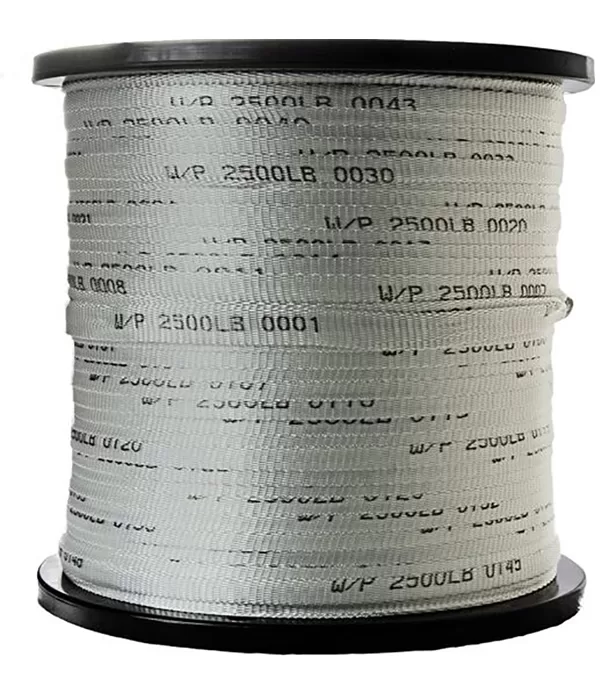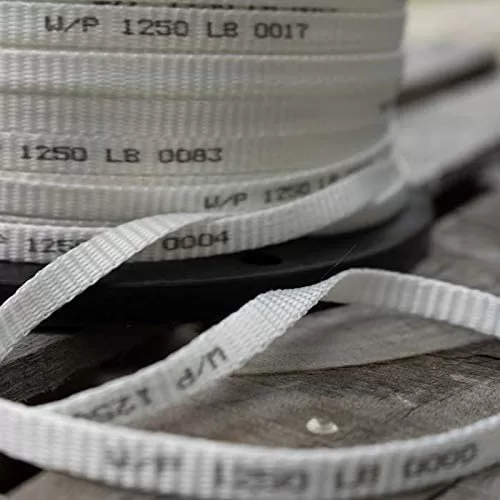Cable pulling tape, also known as fish tape, mule tape, or conduit pull tape, is a crucial tool for electricians, network installers, and anyone routing wires through walls, ceilings, and conduits. It simplifies the process of pulling cables through tight spaces and around bends.
What is Cable Pulling Tape?

Cable pulling tape is a flat, braided or woven line typically made of high-strength, low-stretch polyester. It’s designed to be strong enough to pull cables without breaking and flexible enough to navigate bends and corners. Some key features of cable pulling tape include:
- Material: Polyester (most common), Fiberglass, Nylon
- Strength: Tensile strength ranges from 1250 lbs to 1800 lbs or more
- Tamanho: Diameters typically range from ½ inch to ¾ inch
- Comprimento: Available in lengths ranging from 250 feet to 5000 feet
- Properties: Pre-lubricated for reduced friction, low stretch, high abrasion resistance
Especificações
Here’s a table outlining the typical specifications of cable pulling tape:
| Recurso | Description |
|---|---|
| Material | Polyester, Fiberglass, Nylon |
| Strength | 1250 lbs – 1800+ lbs |
| Size (diameter) | ½ inch – ¾ inch |
| Length | 250 ft – 5000+ ft |
| Properties | Pre-lubricated, Low stretch, High abrasion resistance |
Formulários
Cable pulling tape is a versatile tool used in various applications, including:
- Electrical Wiring: Pulling electrical wires through conduits in walls, ceilings, and floors.
- Communication Cabling: Installing network cables, phone lines, and coaxial cables.
- Data Center Infrastructure: Routing cables within server racks and cabinets.
- HVAC Systems: Pulling control wires for heating, ventilation, and air conditioning systems.
- Security Systems: Installing wires for security cameras, alarms, and sensors.
How to Use Cable Pulling Tape

- Preparação: Measure the length of the conduit or pathway you need to route the cable through. Choose a cable pulling tape with sufficient length.
- Attach the Lead Line: Secure one end of the cable pulling tape to the new cable using a pulling eyelet or a secure knot.
- Feeding the Tape: Carefully feed the cable pulling tape through the conduit or pathway. You can use a fish tape guide or a flushing brush to aid in feeding the tape through tight bends.
- Pulling the Cable: Once the lead line exits the other end, attach it to a pulling tool or another length of cable pulling tape for longer distances. Gently and steadily pull the cable and tape together.
- Tape Removal: Once the cable is pulled through, detach the cable pulling tape from the cable and rewind it onto its spool.
Tips for Using Cable Pulling Tape
- Lubricate the Conduit: Applying lubricant to the inside of the conduit can further reduce friction and ease cable pulling.
- Use the Right Size Tape: Choose a cable pulling tape with a diameter slightly smaller than the conduit for easier pulling.
- Avoid Sharp Bends: Minimize sharp bends in the tape to prevent damage to the cable and the tape.
- Inspect the Tape Regularly: Look for signs of wear and tear on the cable pulling tape before each use. Replace damaged tape to avoid cable snags or breakage.
Conclusão
Cable pulling tape is an essential tool for anyone working with electrical wiring, communication cabling, or any application requiring routing cables through enclosed spaces. By understanding its properties, applications, and proper usage techniques, you can ensure efficient and safe cable installation.
